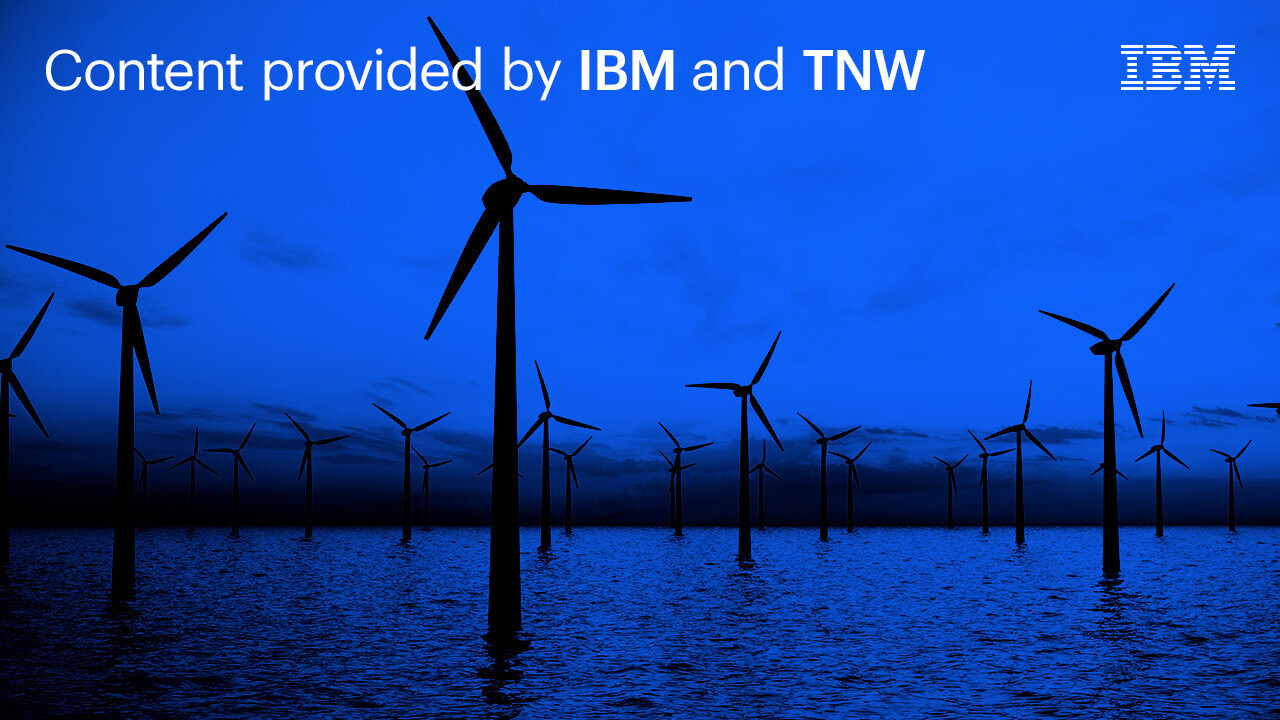
Content provided by IBM and TNW.
Business leaders are looking to ensure that their organizations are doing their part to address the impact of climate change. After another year of extreme weather events — from Hurricane Ian in the United States to heat waves in the UK and floods in Pakistan, the need to transition into a more sustainable world has become clearer than ever before, and companies are now expected to reach new levels of action.
Last year, the COP26 — the United Nations Climate Change Conference — highlighted the need for collective urgent action, with more specificity and near-term targets on cutting emissions this decade, phasing out coal, and setting methane targets. The private sector also has a role to play, with many companies making important commitments on financing and emission targets.
In IBM’s Institute for Business Value (IBV) 2022 study, it was revealed that 48% of CEOs surveyed cite increasing sustainability as one of the highest priorities for their organization in the next two years — an increase of 37% from the 2021 study.
Organizations, companies, and governments are laying out specific sustainability goals — and now, people expect to see what they’re doing to fulfill those commitments with tangible, real examples. As world leaders convene at COP27 this week, conversations around sustainability will continue to shift from goals and ambition, to action and results.
But despite the push from boards, investors, and the public, most organizations still aren’t sure where to start in terms of taking action and making progress towards these goals. Thankfully, technology can help.
The issue with data insights
Harnessing data to accelerate sustainability efforts is crucial, but the path to do so isn’t always a smooth one. Currently, the ability to translate sustainability-related data into actionable insights that companies can use to make decisions and take action is a big barrier to success.
The IBM IBV study shows that 44% of CEOs surveyed cite a lack of data insights as a real problem when it comes to meeting sustainability goals — and 35% say that they’re uncertain how technology can help them manage their sustainability objectives.
As short-term action is key in the quest for climate action, companies are now tapping into AI for its potential to help address this issue. IBM’s Global AI Adoption Index report shows that two-thirds of IT leaders surveyed say their company is currently planning to expedite climate action by applying AI to address sustainability goals in the near future — particularly for managing the complexity of data and reporting.
Companies can extend the life of physical assets such as machinery, equipment or vehicle fleets.
There are practical ways companies can use data, AI, and automation technology to start taking action on their climate goals. Although these systems have existed for a while, they weren’t always used with a focus on achieving sustainability objectives. Luckily, this field is maturing rapidly, and there are several innovative ways to connect net-zero goals with existing technologies. And often, these same technologies can also help with operational efficiency and costs.
Predictive maintenance
Companies can extend the life of physical assets such as machinery, equipment or vehicle fleets, by using IoT data and AI technologies designed to predict asset failure. AI creates machine learning models that can help break down data patterns from their equipment and the causal relationships that assist them in extending asset life, reducing unplanned downtime, and limiting maintenance costs.
Rishi Vaish — Chief Technology Officer for IBM Sustainability Software — explains that a cement manufacturing plant presents a good example where predictive maintenance could be effective.
Cement and concrete production are a major source of energy consumption and greenhouse gas emissions, so it’s important to make sure the equipment in a plant functions smoothly to make operations more energy efficient.
According to Vaish, this can be done by, “augmenting the equipment with IoT sensors and capturing the sensor data. The data can then be fed into AI models designed to monitor the equipment and signs of equipment failure, making it possible to do predictive maintenance for the plant.”
This same principle can be applied across many industries that rely on manufacturing operations and heavy machinery. Taking into account environmental factors, temperature, vibration, and other data points offered by IoT and other sources, applying advanced analysis and AI to understand and optimize the condition of these assets can extend their life cycle and therefore reduce waste. Additionally, it can inform decisions to run equipment more efficiently with less energy usage.
Optimizing real estate
Buildings and factories are major generators and consumers of data from numerous locations. They are also a huge source of energy consumption and emissions for companies. Applying AI and intelligent facilities management technologies can help companies manage their real estate more effectively, improving utilization and finding opportunities to reduce energy consumption and associated emissions.
Facility management is not a new component of business management, but integrated workplace management solutions (IWMS) are bringing advanced developments in this field designed to provide an opportunity for companies to capture and analyze their data to develop greater operational effectiveness.
Computers, data centers and networks take up approximately 10% of the world’s electricity.
With these data insights, business leaders are equipped with the tools to help minimize the environmental impact of their buildings. Companies need up to date occupancy information to know how, when, and by whom space is being used. An IWMS breaks down such information at an enterprise level, providing insights on how to utilize these locations more efficiently.
“For instance, where a company has a building with about ten floors and only about 15-20 people per floor inhabiting the offices, the IWMS software can detect these inefficiencies in building occupancy. The company can then use the software to help consolidate and reconfigure the office plan — for example, into two floors, so the company can reduce its energy footprint,” Vaish explains.
Energy-efficient data centers
An EY study shows that computers, data centers, and networks take up approximately 10% of the world’s electricity, demanding about 190 terawatt-hours of energy annually — which is more electricity than the entire state of New York uses over the same period. With the shift to efficiency solutions such as cloud computing, the number of terawatt hours consumed by computing has stayed relatively consistent despite its growth since 2015. Yet it still requires important amounts of energy, leaving room to improve efficiency even further.
As more cloud platforms promise greater elasticity and savings, many companies are moving workloads out of existing data centers. With intelligent automation software — such as IBM Turbonomic Application Resource Management (ARM) — companies can manage the density of workload on the data center, while addressing increasingly complex business demands.
As Vaish explains, one of the challenges for businesses is working out ways to optimize a given data center.
A company may have a workload required for five servers but use up to ten servers to run it, thereby using twice the amount of power required to keep the machines on when they aren’t needed. ARM software is designed to help identify the parts of the data center where there is inefficiency and where it’s possible to increase the density of the workload.
In this way, he adds, “companies can manage the use of machines available and power off the ones not in use, or shift the workload to one data center or the cloud and completely shut off another data center.”
Emerging capabilities in this space can also provide a clear line of sight into the current environmental impact of their IT infrastructure, as well as specific actions they can take to save energy from moving workloads in near real-time. This approach can enable companies to safely suspend data center hosts to run more applications on less hardware, which can help to reduce energy waste in the data center, and the overall carbon footprint of the company.
Even when it comes to the hardware, advances in server technology can mean one server can cover the same workload as many others.
The way forward
Business leaders need help in connecting the dots between the sustainability goals that they set and the operational systems they need to make that happen. As Vaish explains, the technologies outlined above can be effective when companies make sure that the C-suite connects directly with the people and organizations leading the processes that can make a difference.
CEOs will do well to not just focus on setting sustainability goals alone, but also being able to show how their operation systems are connected to these goals, as well as keeping investors and customers updated on the improvements they’re making over time.
If this is achieved, then companies can have a proper chance of making progress towards their environmental commitments — which is a crucial part of cracking the climate crisis.
Get the TNW newsletter
Get the most important tech news in your inbox each week.





